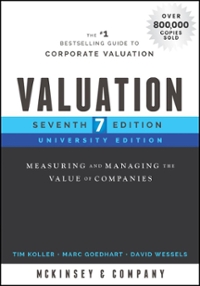8.2. Currency Options MINI-CASE Carrier Lumber Evaluates Its Futures Suppose that Carrier Lumber Ltd, a Canadian forest products company, sells lumber to Home Depot In return, Home Depot will pay Carrier US$1,000,000 in 90 days. At a current exchange rate of US$0.83/Cans, the receivable is worth Can$1,204,819. However, if the Canadian dollar appreciates by US$0.01 within the next three months, the receivable will lose Can$14,343 in value Gamer is concemed about the potential for losses as it has been advised that the spot rate in 90 days can vary between US$0.81 and US$0.85. In order to offset any potential losses in the value of the US dollar receivable, Carrier is considering the use of Canadian dollar futures to hedge its exposure. Since each Canadian dollar futures contract is worth CanS100,000, Carrier would buy 12 futures contracts if it decided to hedge with futures. This figure is found by dividing the face value of the exposure (US$1 million Can$ 1,204,819) by the contract value (Can$100,000) and rounding to the nearest contract. If the Canadian dollar appreciates within the next three months, the futures position will gain US$12,000 for every one cent increase in the USD/CAD exchange rate (US$1,000 x 12 contracts). This figure translates into a gain of Can$14,458 at today's exchange rate (12,000/0.83). The current three-month futures rate is 50.8325. Carrier, at the suggestion of its banker, is also considering the use of currency options to hedge its receivable. By using options rather than futures, management would be able to minimize its downside risk in the event that the Canadian dollar appreciates, yet at the same time benefit from any depreciation that may occur within the next three months. To hedge its downside risk, Cartier would buy 24 three-month Canadian dollar call options (since each Cans options contract is worth Can 50,000). If it used currency options to hedge its receivable, Carrier decided that it would buy these call options with an at-the-money strike price. The premium paid for these options would be around U550 87 per CanS100, or Can512,578.31 at the current exchange rate (0.87 x 1,000 12/0.83). Questions 1. Develop a table showing Carrier's Cans profit and loss associated with the futures position and the options position within its range of expected exchange rates at USSO 01 increments. Ignore transaction costs and margins. 2. Show the total Cans cash flow to Cartier Chedge plus the gain or loss on the hedge) using the options and futures contracts, as well as the unhedged position within the range of expected future exchange rates 3. What is Carrier's break-even 90-day spot price on the option contracts? On the futures contracts? 4. Would you recommend Carrier hedge with the futures contracts or the options contracts? Why? Futures Options In January 1984, the CME introduced a market in options on DM (now replaced by euro) on mast







